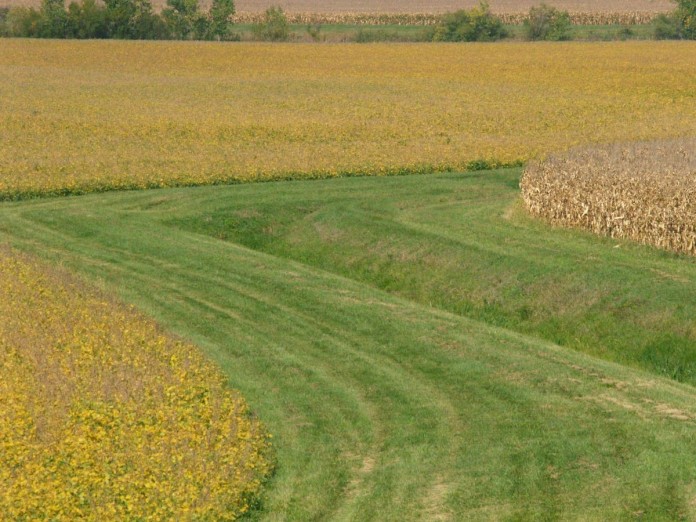HARRISBURG, Pa. — Pennsylvania officials say that the state is failing in its efforts to stop pollutants from reaching the state’s waterways and the Chesapeake Bay so a new strategy is being implemented to stop the pollution.
The Pennsylvania department of agriculture, department of conservation and natural resources and department of environmental protection gathered Jan. 21 to discuss a new plan to meet the obligations being enforced by the federal Environmental Protection Agency.

Between 1985 and 2013, Pennsylvania has reduced the yearly nitrogen loads by more than 11.5 million pounds, phosphorous by 1.46 million pounds, and sediment by nearly 434 million pounds.
Failure
Officials say the state has been working and has prevented million of pounds of pollutants from reaching the state’s waterways and the Chesapeake Bay but the federal EPA says it’s not enough. Last month, the EPA advised DEP that it was withholding $2.9 million in funding, and will consider taking additional actions that increase the federal agency’s role in inspections, permitting and compliance, if progress isn’t made.
They blamed the failures on a few things but the majority was a lack of resources and a lack of man power.
Cost issues
According to the Penn State University Environmental and Natural Resources Institute, it estimated the requirements to implement non-point source best management practices in Pennsylvania’s watershed implementation plan would cost $378.3 million per year through 2025. That estimate was made in 2013.
In addition, another way Pennsylvania is falling short on the its goals is with data. Officials have found that the data to measure pollution reduction efforts for agriculture and urban storm water pollution is inadequate. The data collected has been based on the installation of best management practices where a portion of the cost was shared by the federal or state government. And practices implemented that did not include cost shares from the government was not included at all.
Officials agreed that there needs to be more inspection and verification of activities related to agriculture and urban stormwater sources so that there is documentation that the pollutant reductions are being done to meet the state’s targets.
“The agriculture industry is responsible for contributing three-quarters of the total nutrient reductions expected of states by 2025. That’s a sizeable sum, and no small task, but we know there are countless farmers who are doing their part. Part of the problem is that Pennsylvania is not getting full credit for the work we are doing. This plan sets out to rectify that, plus give those farmers who need help or encouragement the incentives to assist them. We all have a role here and agriculture stands ready to be part of the solution,” said Agriculture Secretary Russell Redding.
Manpower
Another example where the state is falling short is in inspection of farms in the Chesapeake Bay. According to the Pennsylvania Department of Agriculture, the Chesapeake Bay watershed is home to more than 33,600 farms. The federal EPA recommends that the DEP inspect 10 percent of the farms annual. In 2014, the DEP conducted a total of 592 inspections which equates to a 1.8 percent inspection rate. It was pointed out that the DEP does not have has many inspectors as it did just a few years ago which means more money is needed to hire more inspectors.
New plan
The new plan brings a focus to the state’s efforts to help protect the Chesapeake Bay while emphasizing the need for balance and resilience.
The reboot means that Pennsylvania must change its approach for the Chesapeake Bay.
One area that the state departments agreed on is that the Pennsylvania Department of Environmental Protection can not do it by themselves.
The department of Environmental Protection, department of agriculture and the department of conservation and natural resources will now be working together to coordinate plans, policies and resources.
The strategy relies on a mix of technical and financial assistance for farmers, technology, expanded data gathering, improved program coordination and capacity and – only when necessary – stronger enforcement and compliance measures.
The administration’s comprehensive strategy centers around six parts including these:
• Put high-impact, low-cost Best Management Practices (BMPs) on the ground, and quantify undocumented BMPs in watersheds impaired by agriculture or stormwater.
This means the state will work on improving reporting, record keeping and data systems to provide better and more accessible documentation.
The plan will shift an additional 15 percent of available statewide water quality funding equalling $1.25 million dollars to work in the Chesapeake Bay.
• Address nutrient reduction by meeting EPA’s goal of inspecting 10 percent of farms in the watershed, ensuring development and use of manure management and agricultural erosion and sediment control plans, and enforcement for non-compliance.
•Identify legislative, programmatic or regulatory changes to provide the additional tools and resources necessary to meet federal pollution reduction goals by 2025.
• Obtain additional funding resources for water quality improvement.
• Establish a Chesapeake Bay Office to coordinate the development, implementation and funding of the commonwealth’s Chesapeake Bay efforts.
Forest buffers
One area the plan is going to emphasize is the riparian forest buffers. Forest buffers are one of the most effective methods of improving local water quality. So the DCNR will be working with landowners to create buffers and maintain them. The hope is that 95,000 additional riparian forest buffer acres will be created by 2025.
“Of the many best management practices that improve the quality of waters and habitats in the Chesapeake Bay watershed, the single best may be the restoration of riparian forest buffers along stream banks to provide critical barriers between polluting landscapes and receiving waterways,” DCNR Secretary Cindy Dunn said.
More than half of Pennsylvania’s land area drains into the Chesapeake Bay, with the Susquehanna River being the largest tributary in the watershed.











Superb Pennsylvania Conservation Article !!!!